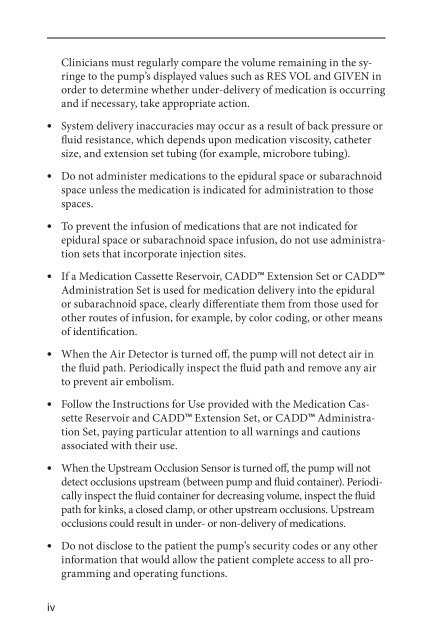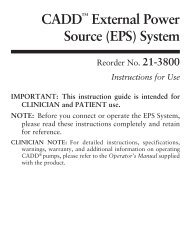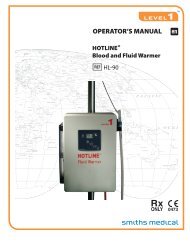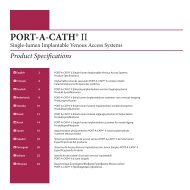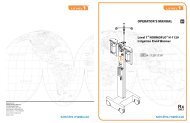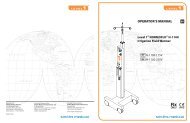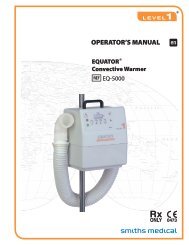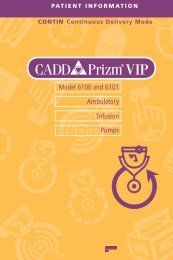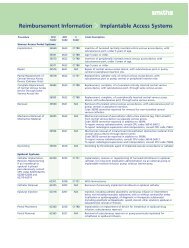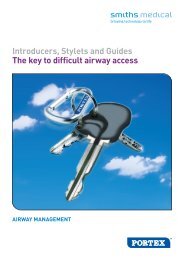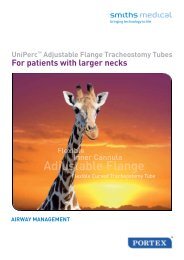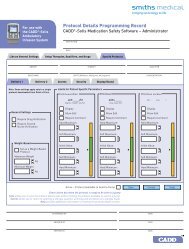Legacy® PLUS - Smiths Medical
Legacy® PLUS - Smiths Medical
Legacy® PLUS - Smiths Medical
Create successful ePaper yourself
Turn your PDF publications into a flip-book with our unique Google optimized e-Paper software.
v<br />
Clinicians must regularly compare the volume remaining in the syringe<br />
to the pump’s displayed values such as RES VOL and GIVEN in<br />
order to determine whether under-delivery of medication is occurring<br />
and if necessary, take appropriate action.<br />
• System delivery inaccuracies may occur as a result of back pressure or<br />
fluid resistance, which depends upon medication viscosity, catheter<br />
size, and extension set tubing (for example, microbore tubing).<br />
• Do not administer medications to the epidural space or subarachnoid<br />
space unless the medication is indicated for administration to those<br />
spaces.<br />
• To prevent the infusion of medications that are not indicated for<br />
epidural space or subarachnoid space infusion, do not use administration<br />
sets that incorporate injection sites.<br />
• If a Medication Cassette Reservoir, CADD Extension Set or CADD<br />
Administration Set is used for medication delivery into the epidural<br />
or subarachnoid space, clearly differentiate them from those used for<br />
other routes of infusion, for example, by color coding, or other means<br />
of identification.<br />
• When the Air Detector is turned off, the pump will not detect air in<br />
the fluid path. Periodically inspect the fluid path and remove any air<br />
to prevent air embolism.<br />
• Follow the Instructions for Use provided with the Medication Cassette<br />
Reservoir and CADD Extension Set, or CADD Administration<br />
Set, paying particular attention to all warnings and cautions<br />
associated with their use.<br />
• When the Upstream Occlusion Sensor is turned off, the pump will not<br />
detect occlusions upstream (between pump and fluid container). Periodically<br />
inspect the fluid container for decreasing volume, inspect the fluid<br />
path for kinks, a closed clamp, or other upstream occlusions. Upstream<br />
occlusions could result in under- or non-delivery of medications.<br />
• Do not disclose to the patient the pump’s security codes or any other<br />
information that would allow the patient complete access to all programming<br />
and operating functions.


